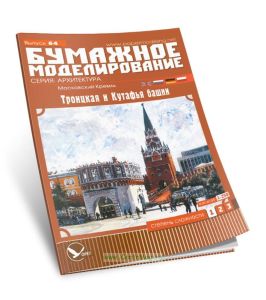Модель-копия из бумаги корабля Sheffield
cruiser SHEFFIELD
According to the London Treaty (1930) the amount of cruisers with 203 mm guns was limited. The Japanese decided to build units with 15 guns 152 mm. The British answered with an idea of a new cruiser equipped with 12 guns 152 mm. The projects were started in August 1933 and lasted till mid-May 1934. On May 1, 1934 first two units Southampton and Newcastle were ordered. The ships were named after British towns, so the whole type was named "Towns".
On December 17, 1934 two next cruisers of this type were ordered Sheffield and Glasgow. First one was laid down on January 31, 1935 at Vickers-Amstrong, Ltd, Newcastle-on-Tyne. She was launched on July 23, 1936, and assigned to the Home Fleet on August 25, 1937. In August 1938 the prototype of air target acquisition radar of 79Y type was installed on Sheffield. At the start of World War II, still in the Home Fleet, Sheffield was on the patrol north form the British Isles. On September 25 she first saw action - was bombed by a German plane, but with no damage. Then she patrolled North Atlantic and North Sea again. During the German invasion of Norway she stayed in Norwegian waters. In August 1940 she came to Gibraltar and was transferred to Force H. With Force H she escorted convoys with supplies to Malta. At the end of September she was in the fleet engagement with the Italian ships at Cap Teulada, and in February 1941 she took part in the bombardment of Genoa. On May 26,1941, Force H headed into the North Atlantic to help search for the German battleship Bismarck, and on May 26 Sheffield was accidentally attacked by torpedo planes from carrier Ark Royal, but she escaped unscathed. En route to Britain on June 12, 1941, Sheffield sank the
tanker Friedrich Rreme. In September she served as a convoy escort to Malta (operation "Halberd").
By the following spring, Sheffield had rejoined the Home Fleet and the Arctic convoys, and in March 4, 1942, she was damaged by a mine - the refit lasted till July 1942. In November 1942 she came back to Mediterranean to support landings near Algiers, North Africa, but in December 1942 she was recalled to Arctic duty. At the end of December 1942, the Germans mounted Operation Regenbogen, a failed attack led by the cruisers Admiral Hipper and Ltitzow on Convoy JW.51B. As part of the close escort, Sheffield sank the German destroyer Friedrich Eckoldt. After supporting antisubmarine operations in the Bay of Biscay, at the end of the year Sheffield was part of the cruiser force that brought to bay and helped sink the German battle cruiser Scharnhorst that attacked convoy JW.55B in the Battle of the North Cape on December 26. In January 1944 the air device on Sheffield was removed. After next actions in Arctica she went back to the States and from July 1944 through May 1945 underwent an extensive refit. The after turret "X" 152 mm was removed and the AA armament was considerably improved.
In the post-war time the "Towns'' ships were still in commission, but only three units including Sheffield were partially modernized. The conning stations were rebuilt, guns 20 mm removed, new latticework masts were mounted and air-conditioning was installed.
In 1967 Sheffield was sold. She was broken up at Faslane in
September 1967.
The model shows the state from 1939.
Масштаб: 1:400
Количество страниц: 4 х А4
Инструкция по сборке моделей на английском и на польском языке.
Рекомендуем







